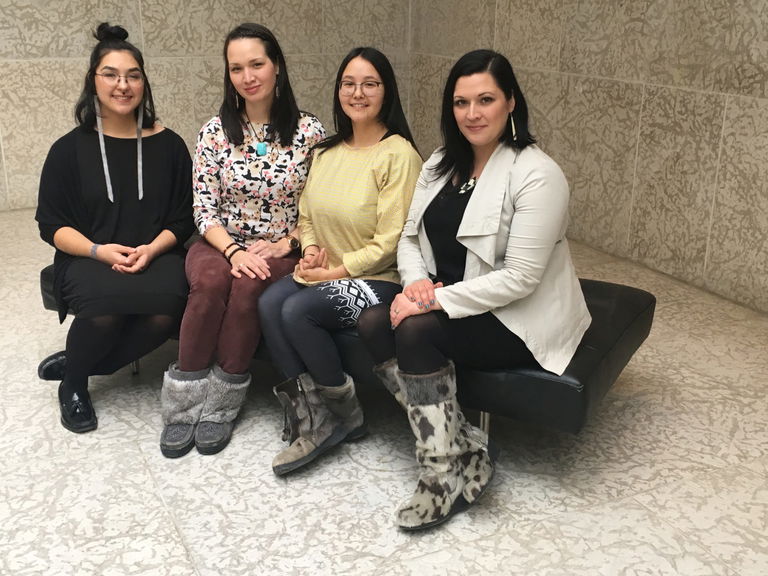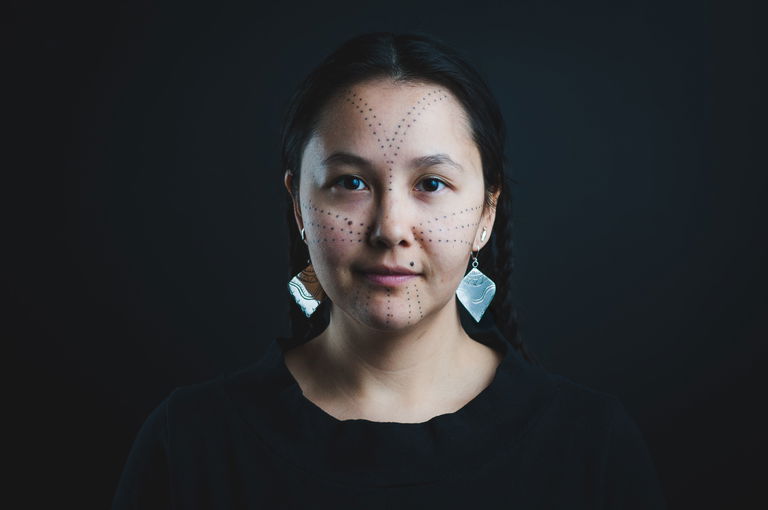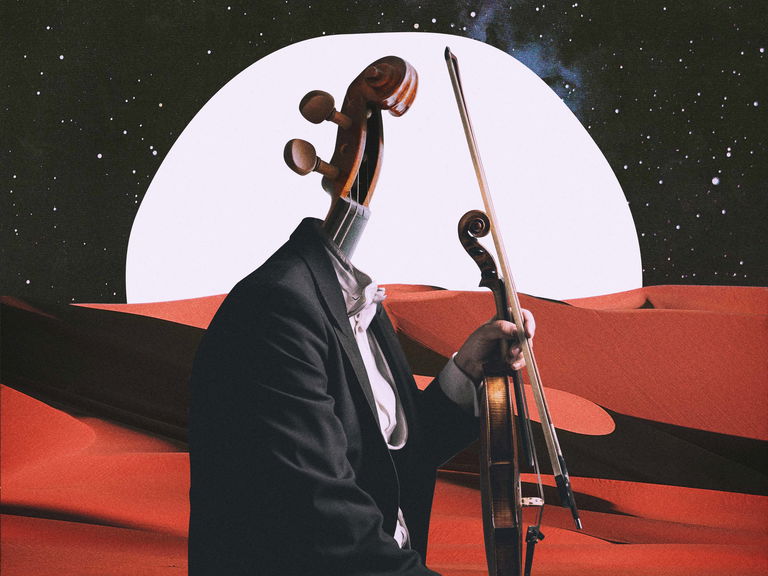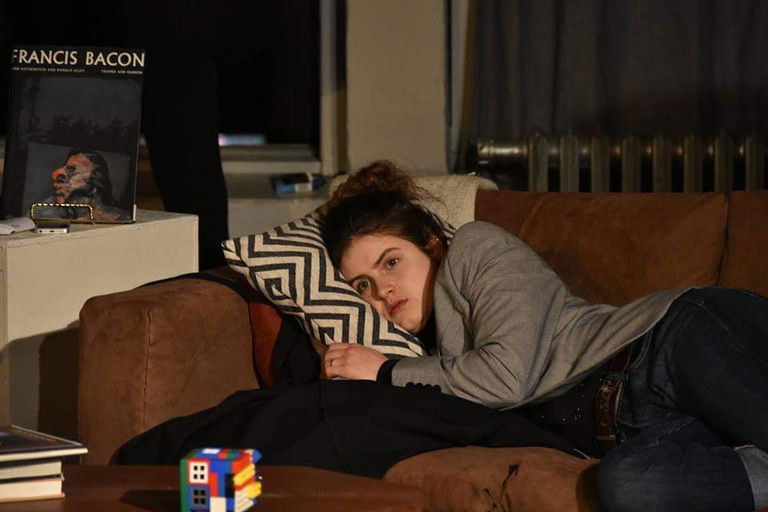
Curating "INUA", Canada’s newest Inuit art exhibit
Carolyn B. Heller for Culture Days
Jul 15, 2021
When Qaumajuq opened at the Winnipeg Art Gallery (WAG) in March, this newly constructed exhibition centre became the world’s largest museum devoted to Inuit art.
An Inuktitut word meaning “It is bright, it is lit,” Qaumajuq houses roughly 14,000 works from the WAG’s permanent collection and more than 7,000 artworks on loan from the Government of Nunavut.
Four Inuit artists, representing the four regions of Inuit Nunangat (the Inuit homelands in Canada), jointly curated INUA, Qaumajuq’s inaugural exhibit. On view through March 2022, INUA showcases 100 works, from the 1940s to the present, by 90 Inuit artists working across Inuit Nunangat, in Canada’s urban south, and in other Arctic regions.
A lot of the time, you’re asked to simplify things and make your vision fit into something that settler or white audiences could understand better. And we didn’t try to do that.
According to Krista Ulujuk Zawadski, Curator of Inuit Art for the Government of Nunavut’s Department of Culture and Heritage, who is one of INUA’s four co-curators, this show reimagines the exhibition of Inuit art in many ways. Most important, she says, “We’re all Inuit, and it was all Inuit at every level of the project. Our project manager at the WAG is an Inuk, our exhibition designer is an Inuk, our catalog designer is an Inuk.”

INUA’s lead curator, Dr. Heather Igloliorte, who’s originally from Nunatsiavut (Labrador), is Assistant Professor and University Research Chair in Indigenous Art History and Community Engagement at Montreal’s Concordia University. The other INUA co-curators are Kablusiak, a Calgary-based multi-disciplinary Inuk artist who was born in Yellowknife, and asinnajaq, an urban Inuk artist and curator from Inukjuak, Nunavik, who grew up in Montréal.
To select works for INUA, an acronym for Inuit Nunangat Ungammuaktut Atautikkut, meaning “life force” or “Inuit moving forward together,” the curators reviewed pieces from the WAG’s permanent collection and the Government of Nunavut’s holdings. They worked with WAG staff to secure loans of artworks from artists and museums elsewhere. They also commissioned about 15 new works in a variety of media directly from Inuit artists.
Expanding the Perceptions of Inuit Art
Working with an all-Inuit team empowered the curators to centre Inuit perspectives, asinnajaq says. “A lot of the time, you’re asked to simplify things and make your vision fit into something that settler or white audiences could understand better. And we didn’t try to do that.”
“If you always simplify things,” she continues, “aren’t you feeding into making a stereotype?”
When people describe Inuit art, explains Zawadski, “they might say, ‘Oh, it’s prints and drawings from Cape Dorset. Or it’s dancing bear carvings.’ But Inuit art is much more than that.”

“We tried to represent Inuit art in all forms,” she says. “That includes LGBTQ+ artists. That includes urban Inuit artists. That includes Inuit from Alaska and Greenland and Calgary. That’s something that not a lot of other shows have done.”
Jocelyn Piirainen, the WAG’s Assistant Curator of Inuit Art, who worked closely with the guest curators, says that in addition to carvings, textiles, prints, and drawings, INUA features video, sound, multimedia installations, and other contemporary pieces.
Connecting to the Ancestors
Each co-curator also selected a work by a family member. These “ancestor pieces,” Zawadski says, are “our way of saying, ‘This is who I am, where I come from.’ Because that’s something that we do as Inuit. People always ask you, ‘Who are your parents, who are your grandparents?’ They want to know where you’re coming from, whose family do you belong to.”
Searching the WAG’s permanent collection, Zawadski found a tusk carved by her great-grandfather Victor Sammurtok. Igloliorte’s ancestor piece is a beaded, caribou-hide bag that her grandmother Suzannah Igloliorte made. asinnajaq chose a pair of fur-clad dolls crafted by her great aunt Elisapee Inukpuk, while Kablusiak’s grandmother Ella Nasogaluak-Brown created Arnaq & Angun, dolls wearing traditional dresses from Inuvialuit in the Western Arctic.
Why Winnipeg?
The issue of whether this major centre of Inuit art should be located outside traditional Inuit lands has been a contentious one. Yet as Zawadski says, “Building Qaumajuq doesn’t stop facilities being built in Inuit homelands.”

“It’s a very good thing to have a facility like this, and there should be more facilities,” asinnajaq agrees. “To me, it’s not a question of there being one and where should it be on earth. The answer is more.”
Qaumajuq is creating new ways to connect to Inuit, too, particularly urban Inuit living in Winnipeg. “It’s a big deal to have a building, a very beautiful, special building, that’s dedicated to you,” says asinnajaq.
But for Inuit, asinnajaq points out, “It’s not just our space. It’s our space being hosted in Treaty One territory by all of these nations” in Winnipeg, the city with the largest Indigenous population in Canada. The Qaumajuq team is working on programming to promote engagement between the Inuit, First Nations, and Métis communities.

And beyond INUA, Piirainen suggests, Qaumajuq is holding this massive collection of Inuit art for safekeeping. A key Qaumajuq design feature is the three-story, glass Visible Vault, displaying nearly 5,000 carvings, where Piirainen says everyone “can feel they are free to come in, walk around the vault, and really see the pieces up close.”

Reaching Audiences Beyond Winnipeg
Qaumajuq opened with a series of virtual events to show off its art to audiences across Canada and beyond.
An online version of the INUA exhibit on the Qaumajuq website enables visitors to walk through the exhibition remotely, and the museum is offering monthly virtual programs highlighting different components of the show. Igloliorte worked with a team of Inuit students to create Nagvaaqtavut | What We Found, a multimedia guide that shares stories about some of the INUA works. The WAG’s education team has been offering virtual tours to Inuit students across the north as well.
By combining these online tools with in-person visits, Zawadski concludes, INUA “is going to reach far more people than any other Inuit art show ever has.”
Cover image: Qaumajuq, the Inuit art Centre at the Winnipeg Art Gallery. Photo by Lindsay Reid.
This article is part of a special blog series featuring writers and creatives from across Canada (and beyond!) with stories that both highlight and celebrate Culture Days’ 2021 theme, RE:IMAGINE. Explore more stories below.
- The Road Less Travelled: Three artists reimagine success and career by Linh S. Nguyễn
- Arts in Motion by Aaron Rothermund
- Reimagining Public Spaces: The Share-It-Square in Portland, Oregon by Laura Puttkamer
- Refresh: How a Year on Instagram Redefined Artistic Communities by Eva Morrison
- RE:PURPOSE by Mike Green
- Recalibrating: A Look at Opera InReach by Anya Wassenberg
- Reimagine—How the Disability Community Accesses the Arts by Rachel Marks
- Reimagining Community and the Workplace of Theatre by Natércia Napoleão
- Helm Studios flips the for-profit music model to empower artists by Aly Laube
- When Less is More: What Theatre Can Learn From a Year in Slow Motion by Megan Hunt
- RE:ORCHESTRATING Our Future: Advancing Sustainable Development Through The Arts by Ryan Elliot Drew
- RE:DEFINING Normal: A Prescription for a Canadian Cultural Landscape in Recovery by Valerie Sing Turner
- Empathy Machines?: Exploring the Relationship between Immersive Art Technologies and Feeling by Jozef Spiteri and Sunita Nigam
- La poésie pour vivre différemment la pandémie par Jérôme Melançon





